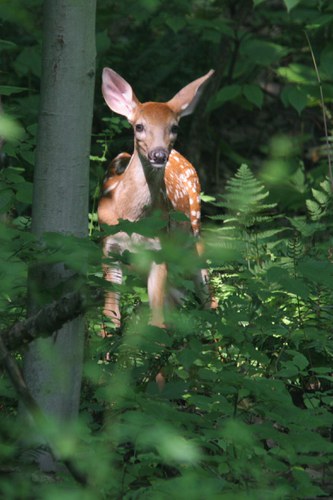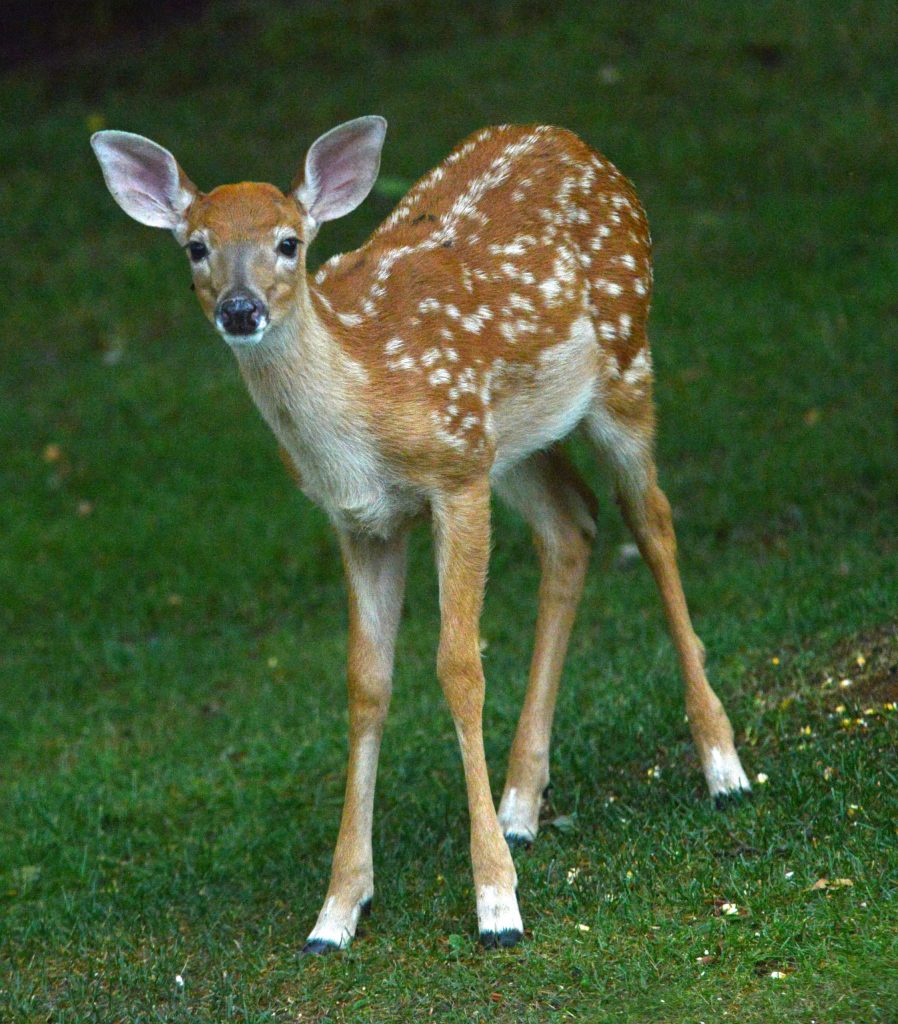This year, I saw my first fawn on May 20th.
Using my keen eye and a good set of binoculars, I was able to sex this baby from 100 yards away just by looking at the pattern of spots on its back. Spots arranged in a straight pattern signify a male while scattered or zigzag pattern of spots denote a female.
If you believe this, I have some ocean-front property in Kansas I’m looking to sell as well.
From where this sexing-by-spot-pattern myth originated, I’m not sure but it is completely UNTRUE. The only way to tell the sex of a fawn is to inspect between its legs where the important parts are – just like the doctor did when you were born. In fact, it is impossible to distinguish the sex of newborns of most any species unless you physically examine them. And even then, it is sometimes still difficult. We’ve had a few “female” research animals change sex and grow antlers after capture.
Seeing the chocolate brown coat dappled with white spots, it is hard to believe that it blends into anything. But this pattern is amazingly cryptic.
Lying quiet and still, a fawn vanishes into the duff of the forest floor instantly. Even when on the move, fawns seem to disappear into thin air. All of our crew members can attest to that.
The spots of their coat run in two lateral lines from ear to tail on each side of a fawn’s body. Other spots appear randomly on body and flank. All fawns have this pattern, male or female.

Did you know you can tell how old a fawn is by counting its spots? Just kidding.
The average number of spots on a fawn’s coat ranges from 272-342. And each spot ranges in size from 0.24 to 0.51 inches in diameter. Yes, someone actually counted and measured them at some point. Like a finger print, spot patterns are unique to every fawn adhering to the general arrangement described above but differing in the number of spots, their size, and how they are dispersed.
It has been my experience that those fawns that bawl the most after capture are males. This seems to hold true more often than not. Whether using spots or bawling method of sexing, you have about a 50:50 shot at being right! 😉
-Jeannine Fleegle, biologist
PGC Deer and Elk Section
Photo credits: PGC
If you would like to receive email alerts of new blog posts, subscribe here.
And Follow us on Twitter @WTDresearch
